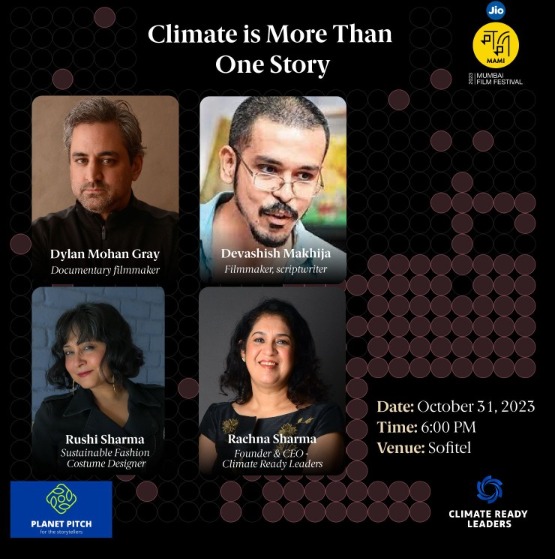Sustainability
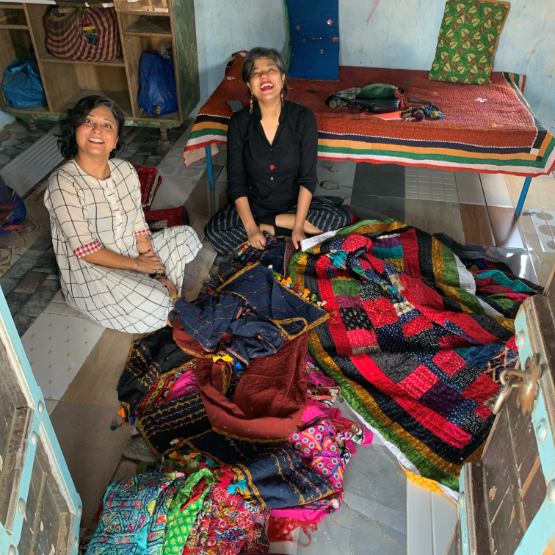
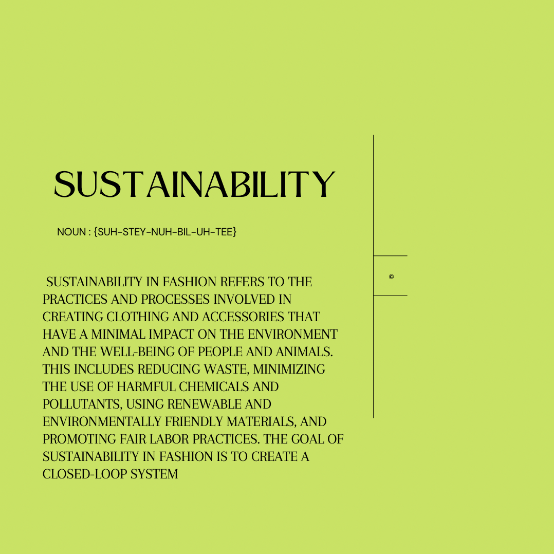
In sustainability, a closed loop system is where resources are used efficiently and waste is minimized, ensuring that the fashion industry can continue to operate in a sustainable manner for generations to come. Key components of sustainability in fashion include ethical sourcing, responsible manufacturing, and conscious consumerism.
As costume designers in Films, it’s urgent that we embrace these sustainable practices in every step of design, conception, fabrication, sourcing and in the end use of the garment once a film runs its course.
In India, Handloom weaving has been a traditional craft in India for centuries, and it is now being embraced as a sustainable alternative to fast fashion.
These textiles are made using natural fibers, such as cotton and silk, and are produced without the use of harmful chemicals. Additionally, handloom weaving provides livelihoods for rural communities and helps to preserve India's rich cultural heritage. Brands and designers in India are increasingly using handloom fabrics in their collections, promoting sustainability and supporting local communities.
Organic Cotton
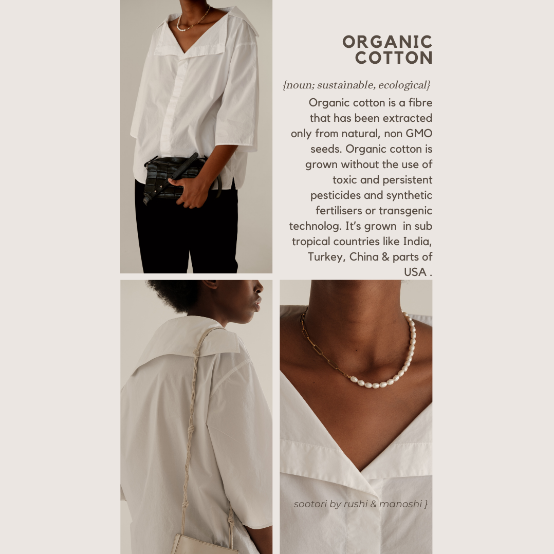
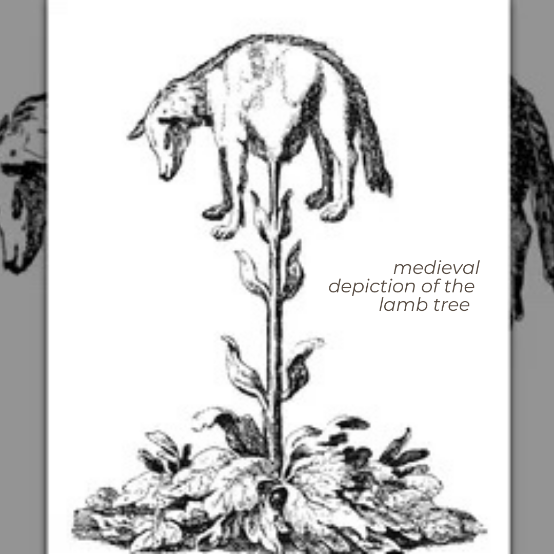
Have you heard of the fable of sheep or lamb growing on trees in India? It was with the ancient Greeks, who during their forays into India were introduced to cotton, or "trees that bear wool,", and hence the magical country grew its sheep on trees Cotton was first grown in India at least 7,000 years ago in the Indus Valley Civilization. The cotton plant is probably native to the Indian Subcontinent. Gujarat is the largest producer of cotton in India The 'by default organic' Wagad cotton now has an organic certification and was branded as Kala Cotton, so named because of the boll attached to the cotton, which in turn, stains the picker's hands black (Kala).
The traditional Indian cotton weaving revolves around 'Khadi', cloth woven by hand using handspun yarn only. Fine cotton fabrics are also referred as Muslin. 'Mulmul khas', the royal muslin is the fabled and most famous cotton weave.
Bespoke
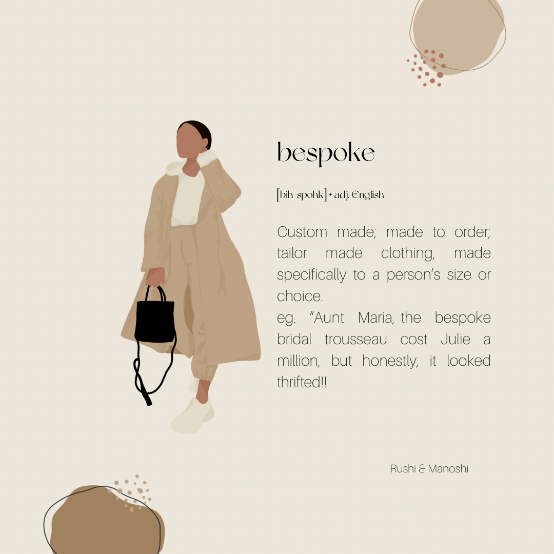
Bespoke or tailor made is a privilege all over the world. But we, in India are blessed with some of the finest craftspeople who are masters in cutting, tailoring and draping. Surface embroideries and details, India is brilliant at this. A talent that we take for granted but really is a feather in our cap. Something that we are so proud of.
The tradition of tailor-made or bespoke clothing dates back centuries and has been an important part of many cultures around the world. In India, the term "masterji" is often used to refer to skilled tailors who create bespoke garments for their clients. The tradition of masterji is deeply rooted in Indian culture, with many families passing down the skills and techniques of tailoring from generation to generation.
An example in tailoring traditions in Mughal India were influenced by the rich cultural heritage of the Mughal Empire, which was known for its opulence and grandeur. The Mughal Emperors and their courtiers were famous for their elaborate and ornate clothing, which featured intricate embroidery, luxurious fabrics, and exquisite detailing. One of the most famous tailoring traditions in Mughal India was zardozi, which is a type of embroidery that uses gold and silver threads to create intricate designs on fabric. Zardozi was often used to embellish the clothing of the Mughal Emperors and their courtiers, and it remains a popular technique today in many parts of India and Pakistan.
In addition to zardozi, other traditional tailoring techniques in Mughal India included chikankari, which is a type of embroidery that uses white thread on white fabric, and bandhani, which is a type of tie-dyeing that is popular in Gujarat and Rajasthan.
The Calico Museum in Ahmedabad, Gujarat has restored and archived a brilliant walk down history of fashion and bespoke cultures of India.
Sartorial
a word that confuses many. The word comes from Sartorius, which is the Latin name of the long leg muscle used when legs are crossed, like a tailor’s often are. It relates to tailoring-Traditional tailoring is called "bespoke tailoring" in the United Kingdom, where the heart of the trade is London's Savile Row tailoring, and "custom tailoring" in the United States and Hong Kong or what the ‘Darzi’ does in India.
Famous fictional tailors include the tailor in the Tailor’s Needle, The Tailor of Gloucester, The Emperor's New Clothes and The Valiant Little Tailor.

Bio Sequins
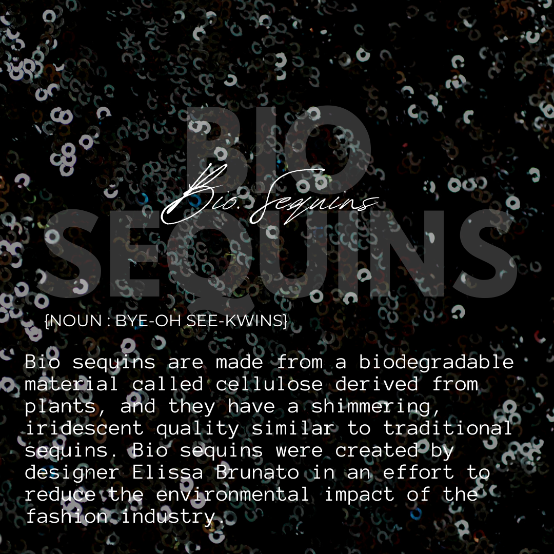
Bio sequins are a sustainable alternative to traditional plastic-based sequins commonly used in the fashion industry. They are “innovated from plant-based cellulose, using no metals, minerals or synthetic pigments or colorants” and they have a shimmering, iridescent quality similar to traditional sequins. The sequins, in collaboration with the start up Radiant Matter are produced using a process called biofabrication, which involves growing microorganisms that produce cellulose in a controlled environment. The resulting cellulose membrane is then processed to create the iridescent sequins.
Bio-iridescent sequins are biodegradable, compostable, and do not contain harmful chemicals. They have a unique shimmering quality that reflects light in different colors, creating a dazzling material.
The sequins have been first used in a dress worn by model and actress Cara Delevingne at the 2019 Met Gala. The dress, which is made entirely from sustainable materials, including organic cotton and hemp, featured hundreds of Radiant Matter sequins in a silver and black color scheme.
Stella McCartney's use of Radiant Matter sequins demonstrates her commitment to creating sustainable fashion without sacrificing style.
MYLO™
MYLO™ - Is a leather- like material made from mycelium, the underground root structure of mushrooms. Mylo is a great sustainable option for leather since it's completely plant based.
There are several reasons why choosing mylo leather over animal leather is a more sustainable and eco-friendly choice.
Firstly, mylo leather is a cruelty-free and vegan alternative to traditional animal leather, which involves the use of animal hides and skins. The production of animal leather often involves the use of harmful chemicals, which can pollute the environment and harm workers in leather tanneries. In contrast, mylo leather is produced without the use of toxic chemicals, making it a more environmentally friendly option.
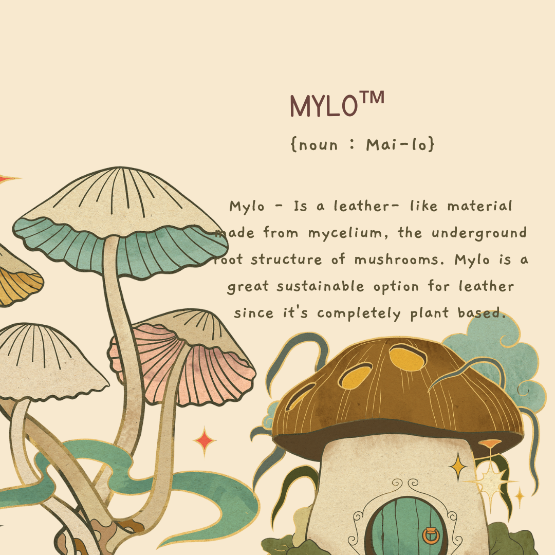
Secondly, the production of mylo leather requires significantly less land, water, and energy than traditional animal leather. The mycelium used to produce mylo leather can be grown in controlled environments, using fewer resources and producing less waste. In comparison, the production of animal leather requires large amounts of land, water, and energy, as well as the use of animal feed and other resources.
Lastly, mylo leather has the potential to reduce the environmental impact of the fashion and leather industries. The production of traditional animal leather is a significant contributor to deforestation, greenhouse gas emissions, and other environmental problems. By choosing mylo leather, consumers can support more sustainable and eco-friendly production methods, which can help reduce the environmental impact of the fashion industry.
Overall, choosing mylo leather over traditional animal leather is a more sustainable and eco-friendly choice, which can help protect the planet and reduce the environmental impact of the fashion industry.
One of the most well-known companies using mylo leather is Bolt Threads, which is a biotechnology company that specializes in developing sustainable materials for the fashion industry. Bolt Threads has partnered with several well-known brands, including Adidas, Lululemon, and Stella McCartney, to create products using mylo leather.
Fashion Jargon
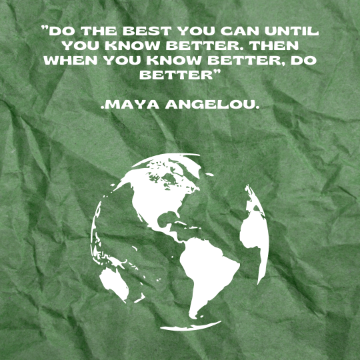
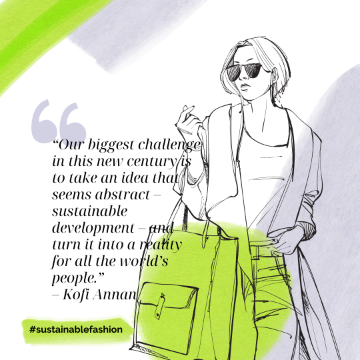
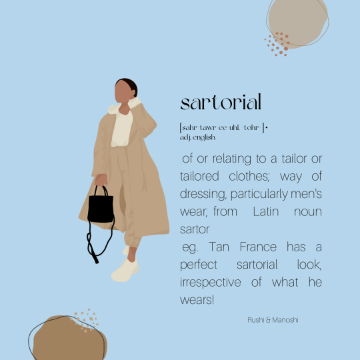

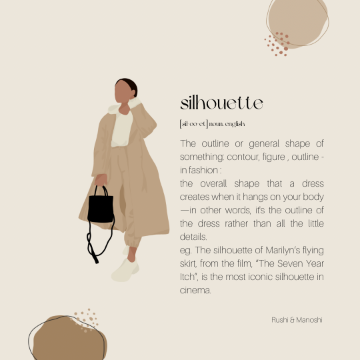
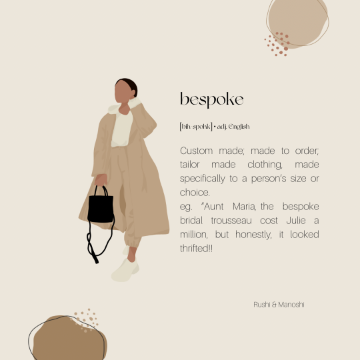

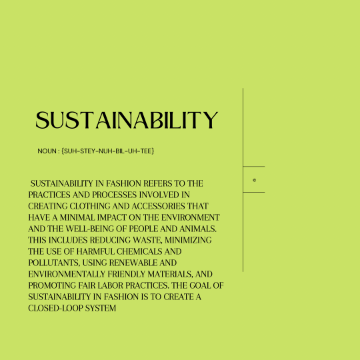

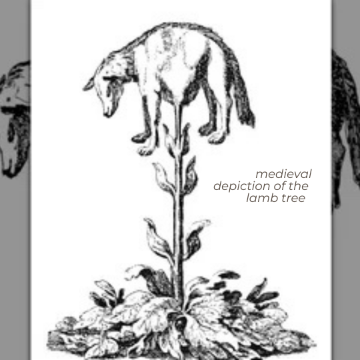
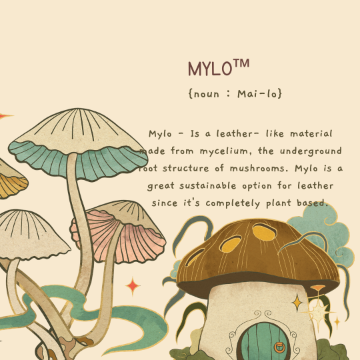
A Sustainable choice
Sustainability- a way of life

We are passionate about storytelling and our characters, synchronised with staying true to our value chain and ethical design practices. Our mantra is to find and incorporate new ways to make costume design sustainable and to reduce the costume design footprint in the film industry.
A good character design is when an actor wears a costume that stays true to the narrative and the world of the film. Similarly, a good design is a sustainable design, creating an ecosystem of our supply chain and by closing the loop, thus, creating a good ethical costume. A closed loop system is a design and production method that works to keep clothes in circulation for as long as possible (also called circular design)
Our journey into sustainable costume design started with the film Thugs of Hindostan . It was a mammoth project where we translated all our research and history into enormous quantity of costumes. This gave rise to a huge challenge of stock, surplus & waste generation. As costume designers we move on to the next film or project leaving our beloved costumes behind. In the process they are neglected and, in most cases, end up getting wasted. Costume stock has become our primary concern and creative solutions like recycling old costume pieces from other films created by fellow costume designers in the fraternity; using creative up-cycling techniques; and down cycling, are all methods by which we divert our fruits of labour away from the landfills. Our intent is to give a new lease of life to costumes for a more ethical film making process.
We promise to make our beloved film industry increasingly more sustainable vis-à-vis costume design by turning our insights into action and paving a way for tomorrow’s clean and green costume design.
- Rushi & Manoshi
Climate and Sustainability Storytelling Panel at 2023 JO MAMI Mumbai Film Festival
